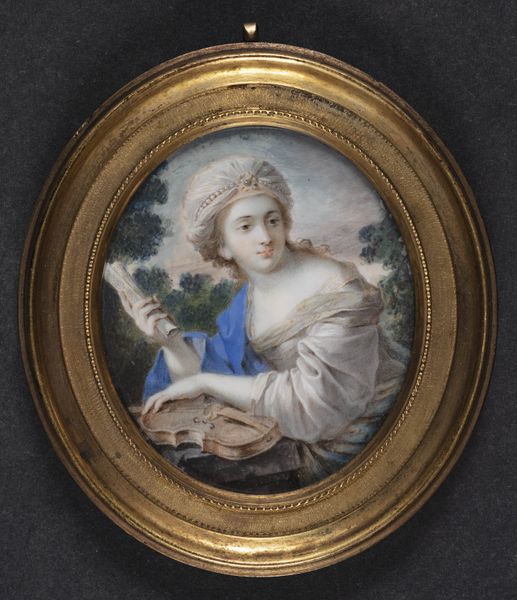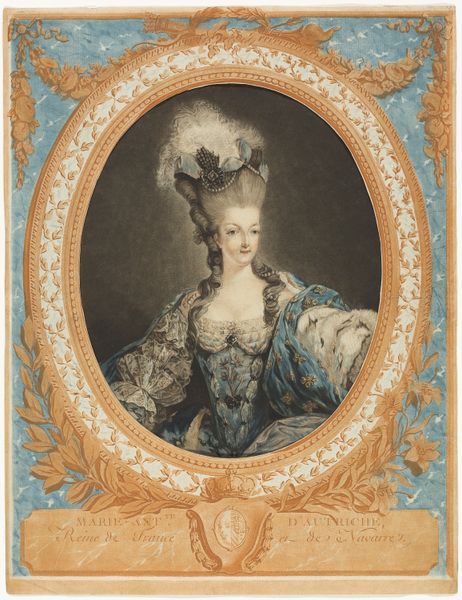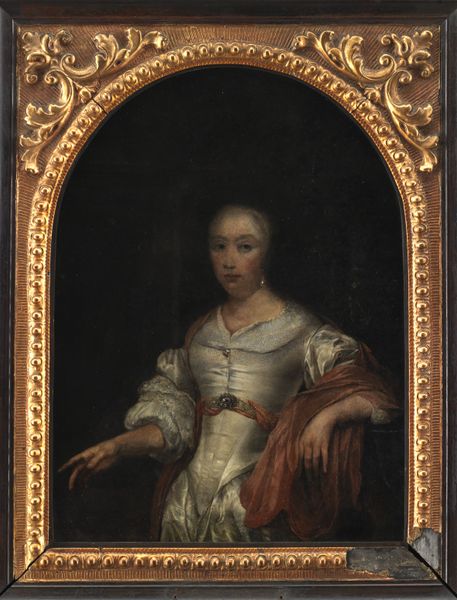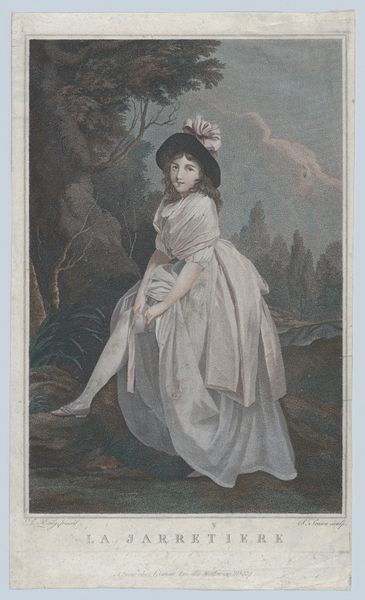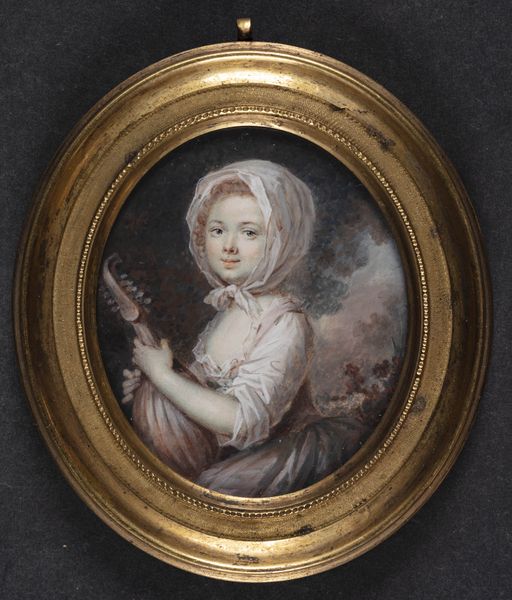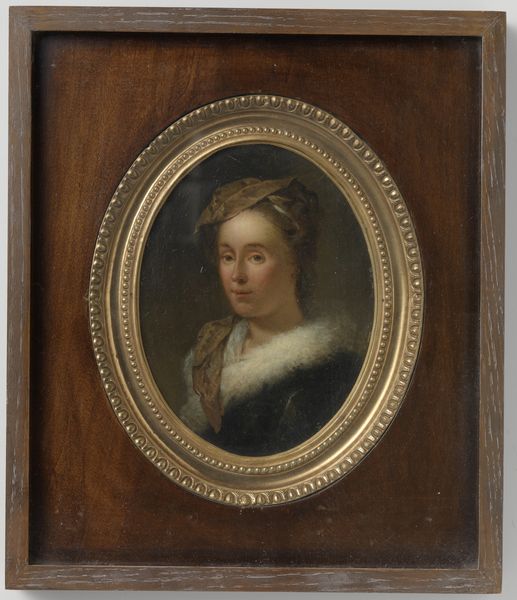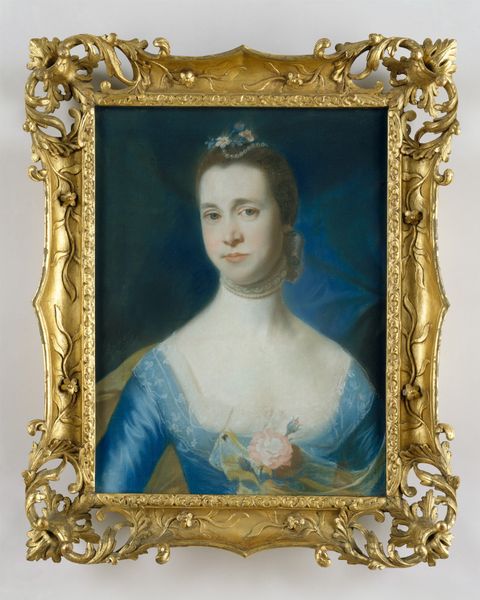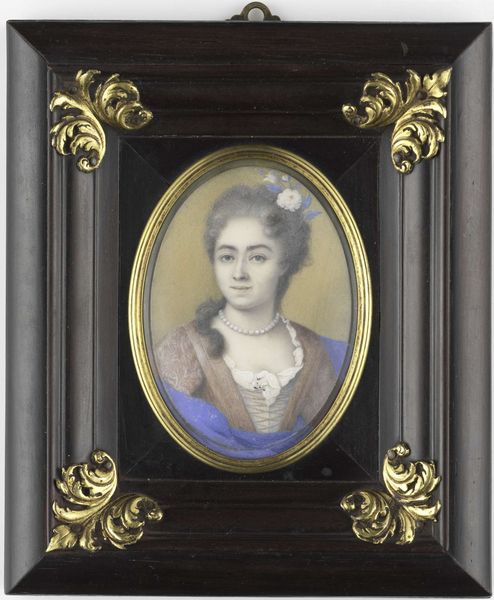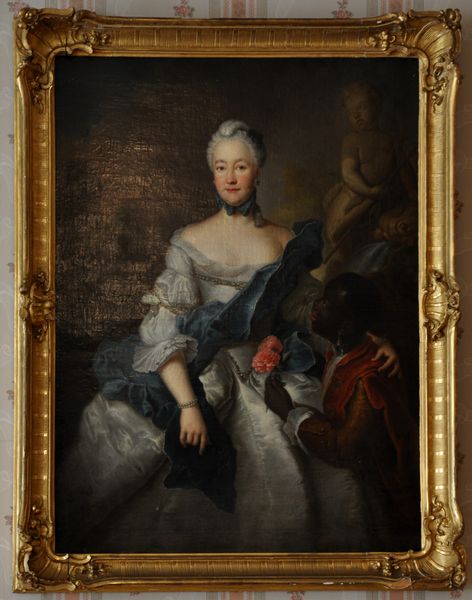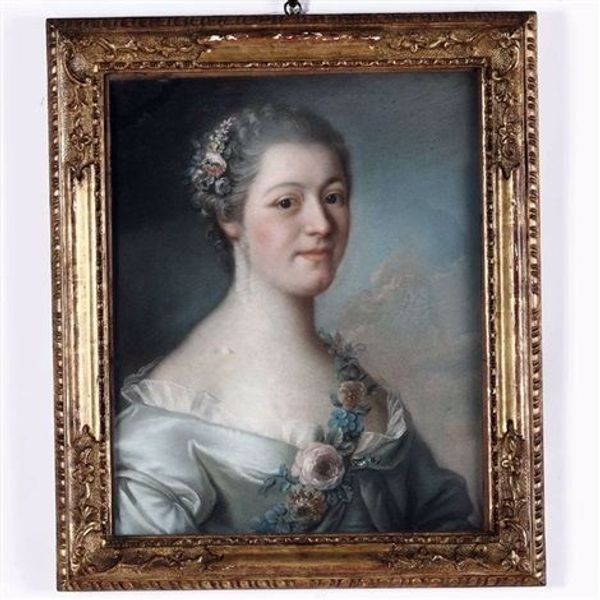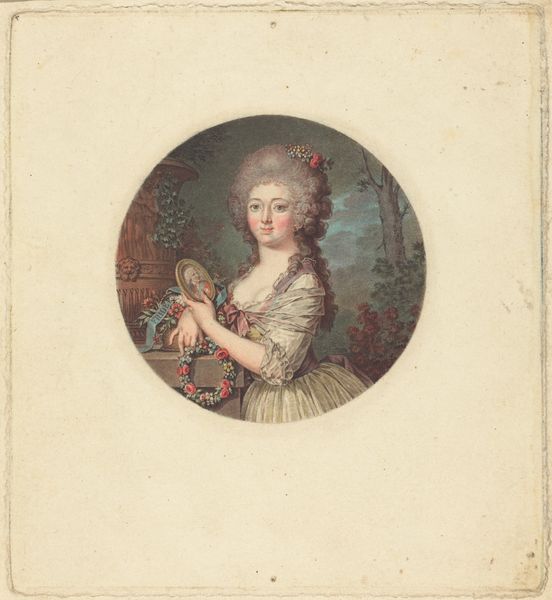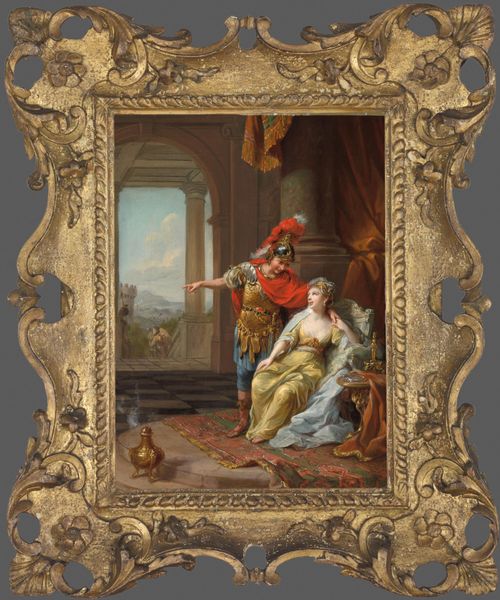
Dimensions: height 50.0 cm, width 39.5 cm, depth 4.5 cm
Copyright: Rijks Museum: Open Domain
Editor: This is a rather curious work - a 'Portrait of Catharina van Braam Houckgeest,' painted around 1790. It's an oil painting, but the whole piece has this ephemeral, almost dreamlike quality to it. It feels very allegorical… and just a bit unsettling, wouldn’t you say? What strikes you most about this piece? Curator: Unsettling, yes, it has a strange melancholic charm about it. The portrait within a portrait... It's as if we are catching a glimpse into a hidden chamber of memory. Do you notice how the figure behind the portrait, draped in blue, seems to embody both support and sorrow? Editor: I do. Her gaze is so wistful. Is that supposed to be her, as well, this... ghostly figure? Curator: Perhaps. Or maybe she’s a muse, a figure of contemplation representing the sitter's inner life. That maritime scene beneath the drapery whispers of voyages, perhaps of loved ones departed. What about the color palette? The artist used colors that might tell a story on their own. Editor: Earthy tones, definitely, almost fading into the background… like a cherished memory worn by time. The vibrant blue of the figure and the gold ornamentation stand out to highlight specific aspects, contrasting against the washed-out scene behind it all. The texture also adds another layer with an intricate but unkempt background pattern adding detail. Curator: Precisely. That contrast is key! It is where intimacy and grandeur clash to invoke a deeper emotion from those observing. Do you feel this contrast, and is it perhaps the core value to it all? Editor: I do! I didn’t quite know how to put it into words, but hearing you describe it like that definitely sheds new light. Thank you. Curator: The pleasure's all mine! It’s through these shared reflections that the true essence of the work unfolds. Each painting is just the frozen mirror, it takes living observers to complete its meaning.
Comments
rijksmuseum about 2 years ago
⋮
When Andreas Everardus van Braam Houckgeest looked in this mirror in Canton, he was briefly reunited with his wife, Catharina, who had stayed behind in the Netherlands. The two women at the lower left mourn a Dutch ship setting sail, while the anchor at the right symbolizes hope. The inscription translates as: ‘Our good wishes accompany he who departs.’
Join the conversation
Join millions of artists and users on Artera today and experience the ultimate creative platform.
